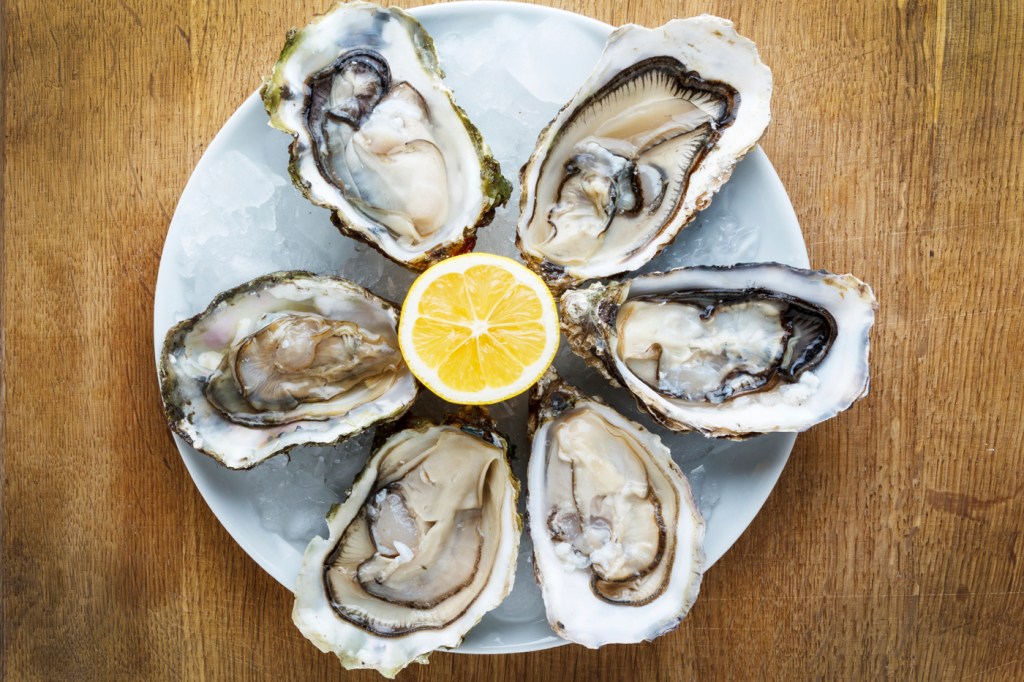Everything you need to know about oysters

“ ‘O Oysters,’ said the Carpenter,
‘You’ve had a pleasant run!
Shall we be trotting home again?
’ But answer came there none—
And this was scarcely odd, because
They’d eaten every one.”
The words are Lewis Carroll’s, in “The Walrus and the Carpenter,” but on Wednesday, National Oyster Day, we gleefully make them our own.
But should we? Does such mass consumption of the briny, melt-in-your mouth mollusks pose a danger to our coastal ecosystems?
It depends on where you get your oysters from, say David Kimbro and Jonathan Grabowski, ecology experts at Northeastern’s Marine Science Center.
Do the oysters chilling on your plate come from a sustainable source? What are the conditions in the fishery or farm they were harvested from? Are they local or shipped from a state many miles away, say, from Texas to Florida, a common occurrence these days? Is the estuary where they grew rich in their progeny or running dry?
“It’s important to get your oysters from a place that has that information,” Kimbro, an assistant professor of environmental science, says over the phone from Apalachicola Bay, Florida, which provides a cautionary tale: The site produced 10 percent of the wild-oyster harvest nationwide before 2013, when its oyster reefs collapsed. “That’s the power of the consumer, the market. You ask questions. If they don’t have answers you go somewhere that does, and reward the businesses that provide that clarity.”
One place to start your research, he says, is the Monterey Bay Aquarium Seafood Watch, which researches fisheries and accredits sustainable ones.
Kimbro knows his oysters. His lab studies the ecology of marine habitats such as oyster reefs and salt marshes across the country to determine why some thrive and others don’t. The researchers monitor the targeted areas to detect patterns and then conduct experiments in the lab to uncover cause-and-effect relationships among specific conditions and the viability of the setting. “We use those answers to guide conservation efforts if things are going well and restoration efforts if they aren’t,” he says.
Real oysters, unlike the hapless ones in Carroll’s famous poem, perform a variety of important ecological functions: Oyster reefs support crabs and myriad fishes and buffer coastal erosion. Oysters also remove excess nutrients from estuaries and help to prevent harmful algal blooms.
Of course, farmed oysters—most of those you find in supermarkets—grow in much more consistently controlled environments than wild ones do. But farming has its downsides, too: Imported nonnative oyster species can reproduce and threaten native ones, and the equipment used in the farming process, says Kimbro, can provide a “settlement substrate” for invasive organisms.
Still, both researchers give a thumbs up to National Oyster Day. “Farming native eastern oysters is about as sustainable as you can get in terms of a food source,” says Grabowski, an associate professor of marine and environmental science, who worked on oyster aquaculture—that is, how best to farm oysters—years ago and now concentrates in his lab on improving the management of “economically important species” such as lobsters, cod, herring, monkfish, and striped bass.
How to celebrate? “I would just say, ‘Enjoy a native oyster,’ says Grabowski.
Or even a multitude.





